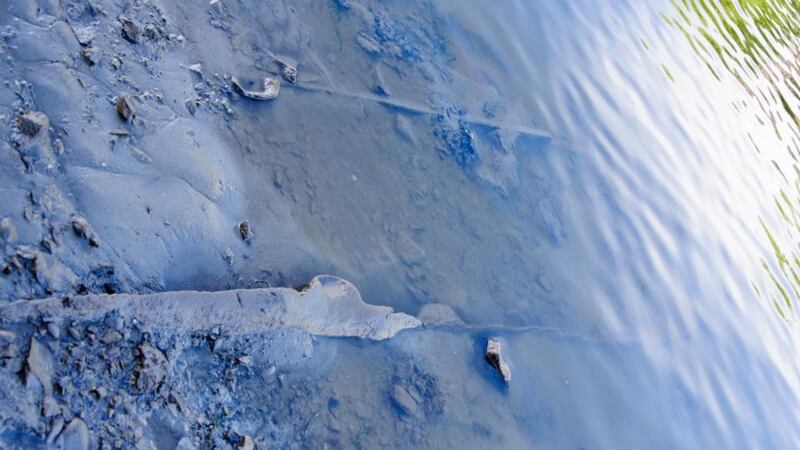An ancient log-boat, possibly thousands of years old, has been discovered partly embedded in the banks of the River Boyne in Drogheda, possibly where it originally sank.
An initial examination by specialist archaeologist Karl Brady, suggests it could be unique because, unlike other dug-outs or log boats found in the Republic, it has a pair of oval shaped blisters on the upper edge.
Such features were “ very rare”.


"I have seen them on some boats found in Northern Ireland and Britain but not in Ireland. They could have been used for holding oars," said Mr Brady, who is an underwater archaeologist with the Department of Arts, Heritage and the Gaeltacht.
The boat was found by members of the Boyne Fishermen’s Rescue and Recovery Service (BFRRS) as they were carrying out one of their regular operations to remove shopping trolleys from the Boyne. The find indicates that Drogheda could have other hidden treasures.
"We had our boat just pulled in here and I saw it and said look at that," said Christy Finglas who was working with Michael Hodgins as they checked the river for the trolleys .
Mr Finglas remembers being with his father on the river but closer to its mouth, when they came upon a similar boat 45 years ago near Premier Periclase.
“That’s about three miles from here.”
Dr Ned Kelly the keeper of antiquities at the National Museum said: “This is a very exciting find. I would not be surprised if more craft like this were found in the Boyne.”
Minster for Arts, Heritage and the Gaeltacht, Jimmy Deenihan said: "This is a significant discovery and is one of only a handful of log boats ever to be found in the river Boyne.
“Its discovery will greatly add to our overall understanding of the use of boats and navigation on the Boyne.”
“It is impossible to date the boat at this stage but such craft were in use from prehistoric times right up to the 18th century,” the Minister added.
Mr Brady believes it is made from oak and while the exposed end, which appears to be the bow, is jagged in appearance, it looked to be extremely well preserved.
“It has curving side walls and the top edge is exposed so there could be between 80cm and 1m of it buried.”
The exposed part appears to be worn and he said the remaining section could be better preserved where it is embedded underneath the river bank.
Such boats were in use from prehistoric times to transport people, goods and invading tribes.
Dr Kelly said: “The Boyne is such an important river and crafts have been operating on it since the Stone Age. These vessels can get swept downstream towards the estuary so there might be a concentration of the in the Drogheda area. This particular vessel could be anything from 500 to 5,000 years old.”
Recent heavy rainfall and the introduction of waste water treatment has led to a lot of sediment and silt being removed from the river bank and bed is believed to be a possible reason why the boat has become visible for the first time in hundreds of years.
The boat is being left in situ for the moment and is not accessible to the public.
It will be dated later this year.








